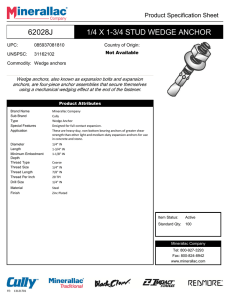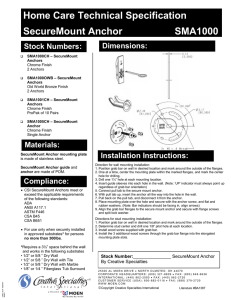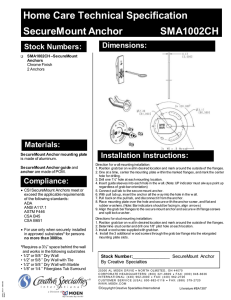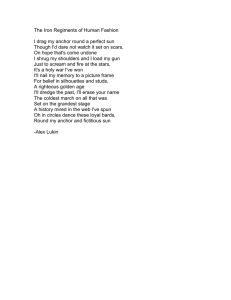iq dental - Seiler Microscope
advertisement
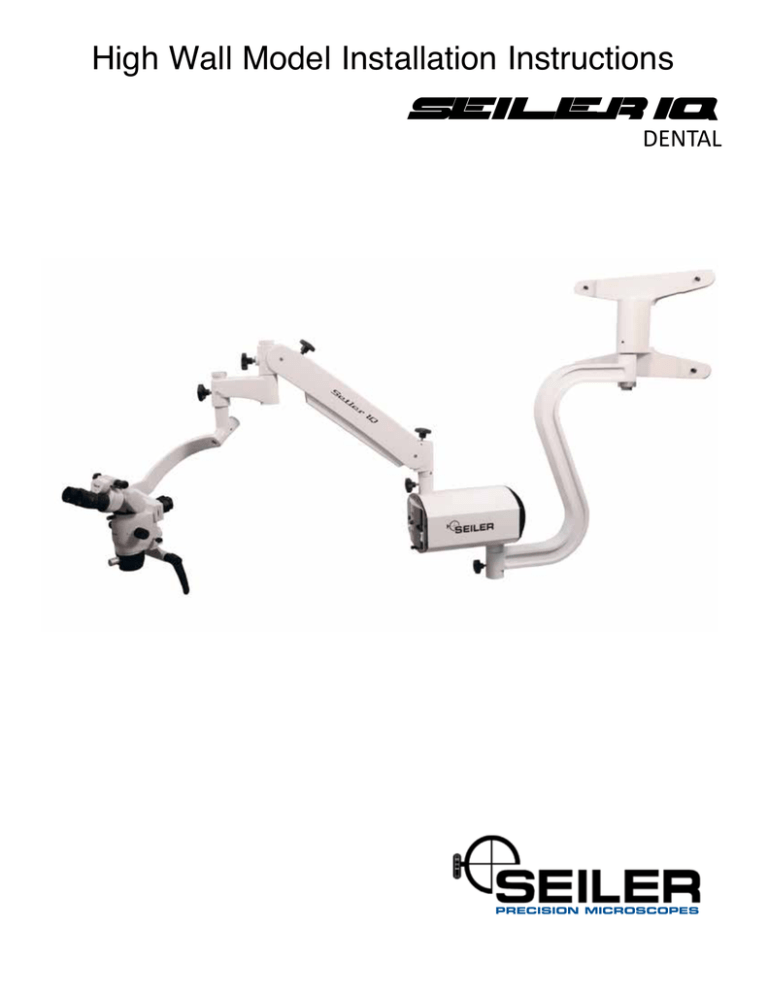
High Wall Model Installation Instructions SEILER IQ DENTAL PRECISION MICROSCOPES 1) Determine suitable location: Wall next to doctor, wall behind doctor, etc. at a distance no greater than 50” and no less than 30” from the wall to the patients mouth. 2) Position the wall bracket with the threaded opening ­facing down and with the lower mounting holes ­ approximately 81” above the floor. Fasten the wall bracket to the wall making sure the wall construction is wood stud (16” on center ) or cinder block. All other constructions require wall bracing - contact your building maintenance department or an outside contractor in this case. 3) Remove the “S” arm assembly from the shipping carton and connect this assembly to the bottom of the wall bracket by carefully threading the shaft into the wall bracket using the gray cap on the “S” arm assembly to thread in the shaft. 4) Two holes are used to insert a tool for loading the internal bearings. One hole contains a setscrew which you can adjust to lock the desired tension. 5) After the entire microscope is assembled to the high wall bracket, check for satisfactory rotational ­ movement. 6) After you have set the tension as described in step 4 and checked the rotational movement, tighten the setscrew in the front of the wall bracket. 7) A thru hole is provided to wire the microscope into the wall/ceiling. Check your local electrical code for proper wiring. 14” High Wall Mount 6” 23.5” 24” VERTICAL MOVEMENT wƒ:250mm (10”) SEILER IQ 10” 19.5” 25” HOLE 24” CEILING FLOOR CEILING TO FLOOR 8 FEET Positioning High Wall and Ceiling Recommended Mounting Location SECONDARY MOUNTING ZONE PREFERRED MOUNTING ZONE PATIENT ENTRY SIDE OF CHAIR/ TABLE 48” 36” 60” 36” TYPICAL MOUNTING LOCATION (LEAST USED SIDE OF ROOM) NOTE: If the typical position is not available, locating the microscope within the Preferred Mounting Zone (vertically shaded) will ensure that there is maximum maneuverability of the microscope in all directions. Locating the microscope within the Secondary Mounting Zone (diagonally shaded) is possible, depending upon the specic layout of a room, but may reduce maneuverability. 3433 Tree Court Industrial Blvd. St. Louis, MO 63122 Toll Free: 800-489-2282 Seiler Precision Microscopes does not supply screws for mounting wall brackets. The type of screws and/or anchors to be used should be determined by a qualified contractor. If mounting to a metal studded wall, there needs to be backing such as plywood mounted to each side of the wall and the screws to attach the wall bracket to through both pieces of plywood, the entire thickness of the wall so it is structurally sound. For mounting to a wood studded wall, large Lag screws should be sufficient. Again, a professional contractor should determine size and length. Wedge Anchors Wedge anchors are for attaching fixtures to a solid such as concrete . The installed end of the anchor features a conical segment with a metal clip around it. Upon setting the anchor the cone pulls up through the clip and pushes the clip against the sides of the hole. This gives the anchor its holding power within the hole. Anchor diameter will be equal to the hole size. Expansion of the wedge anchor creates large point bearing stresses within the hole; therefore, this anchor requires a solid base material to develop its full capacity. For this reason, brick and partially filled mortar joints in brick walls or paving may be unsuitable for wedge anchor usage. Sleeve Anchors Sleeve anchors also are used to attach fixtures to solid materials. A bolt is surrounded by a cylindrical metal sleeve. They operate by the expansion of the sleeve into the base material when one tightens the bolt. Expanding the sleeve along the length of the anchor enables a larger bearing surface than that offered by the wedge anchor, and can better adhere to irregular surfaces within the base material than can the wedge anchor. Therefore, sleeve anchors can be better suited for brick masonry than wedge anchors. Sleeve anchor diameter will be equal to the hole size. Sleeve Anchors come in models with round-headed bolts, flat-headed bolts, bolts with a hex nut/washer assembly, and bolts with an acorn nut/washer assembly. Drop-In Anchors Drop-In Anchors are designed for solid concrete base material, and are not recommended for masonry or brick. Drop-in anchors are a female mating part anchor with coarse threads. The drop-in anchor requires a setting tool for expanding the anchor. Expansion Shield (Single Expansion Shield or Double Expansion Shield) Expansion shields may be single or double piece design. Both are inserted for shear loads or where the bolt may be under side pressure or vibration. Expansion shields consist of a nut, a cone and a tubular shield that are put together as a single unit. The two-piece tubular shield in either version contains a wedge shaped nut at one end, a wedge shaped hollow cone at the other end and is held in place by two spring bands. The expansion at both ends of the shield spreads the anchored load throughout its length PRECISION MICROSCOPES Personnel A Division of Seiler Instrument Company We are here to serve you! If you have any questions regarding Seiler’s products or services, please feel free to contact us. ( : : 2 : * : 8 : 800.489.2282 314.968.2282 314.968.3601 micro@seilerinst.com www.seilerinst.com • Division Manager Dane Carlson ext. 365 • dcarlson@seilerinst.com • Corporate Accounts/Marketing Nicole Rasch ext. 345 • nrasch@seilerinst.com • Technical Product Information Tony Leise ext. 363 • tleise@seilerinst.com • Accounts/Tracking/Bulbs Sandy Jeremich ext. 336 • sjeremich@seilerinst.com 3433 T r e e C o u r t I n d u s t r i a l B l v d . • S t . louis, MO 63122 PRECISION MICROSCOPES 06_10_13
